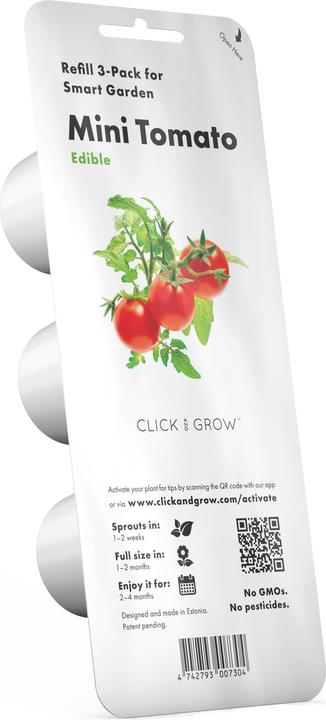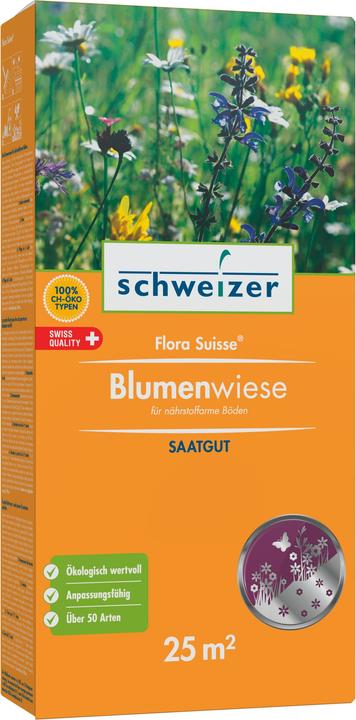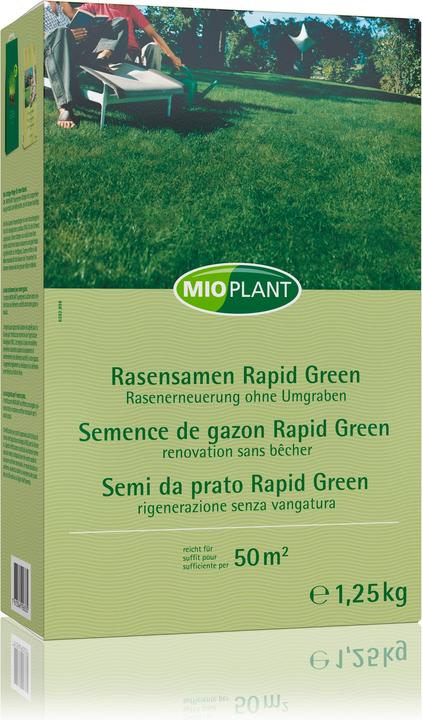
Samen Mauser Marigold Fiesta Gitana Mix.
Plant seeds

Spring is just around the corner. Snowdrops are being joined by other early-flowering bulbs such as forsythia, daffodils and the first of the tulips. Now is a good time to prioritise summer flowers and vegetables and whip your garden into shape.
Ground frost and snow are still possibilities in March, as we've recently witnessed, so very few plants can be planted straight out. But you can still start some off on the windowsill or in your cold frame or raised bed. Before Mother Nature wakes, you have time to think about what should be growing when and where. A rule of thumb is that you can leave plants outside as soon as temperatures are consistently over 5 degrees and not dipping below this at night.
Thanks to intensive preparation, you'll know the areas in the garden that tend to catch the sun as well as the shaded spots. You'll also know where the soil is moist, sandy and loamy. Armed with this knowledge, you can organise your beds and other areas for your flowering friends, as not all plants like the same climate and soil.
Others like the same conditions, but flourish at different times of year. For example: daffodils, gladioli and crocosmia bulbs can all live happily alongside each other. All three like similar soil conditions and a lot of sun. Daffodils flower in spring, whereas gladioli bloom in summer. And in autumn, crocosmia show off their stunning red-orange petals. This results in a wonderful range of different colours in the same spot over the course of the season.
Light and heavy feeders
It's important to know the light and heavy feeders in your vegetable patch. Heavy feeders need a lot of nutrients and leach from the soil. This category of plants includes potatoes, tomatoes and leeks. The nutrients they remove must be readded to the soil with either mulch, compost or the right manure. It's best to give drained soil a break by planting a light feeder or a soil conditioner.
Light feeders include beans, peas and undemanding herbs. Strawberries are another example. Clover and vetches are typical soil conditioners, also known as green manure. At the end of the season, simply leave them – the dead plants will provide the soil with nutrients naturally. A lot of other flowers work as soil conditioners, such as marigolds and borage. Their blooms aren't just easy on the eye; the petals are edible and look beautiful in salads.

Samen Mauser Marigold Fiesta Gitana Mix.
Plant seeds

Samen Mauser pole bean Neckar Queen
Vegetable seeds

Samen Mauser Borage Cucumber herb
Vegetable seeds
Got the idea? Good. Let's get started! Tables on which plants thrive when and where are available all over the internet. We've adjusted the filters in the shop so you can sort seeds by sowing, flowering and ripening period. Scroll down for some examples of popular flowers, salad leaves and vegetables.
When you've decided which plants you're going to grow, the next question is: where are you going to get them from? Galaxus has an impressive selection of hundreds of plants and seeds. It's an opportunity to chat with gardening enthusiasts near you about seeds and seedlings.
You can even gather wild plants in the great outdoors if the varieties aren't protected and you aren't in a conservation area. My garden is haunted by the offspring of a wild peppermint plant, and a native lilac shoot is also making itself at home.
It's wild garlic time!
While we're on the subject of wild plants, the first wild herbs are also starting to sprout. If you keep your eyes peeled, you can harvest the first delicate wild garlic shoots in early March. Make sure that you're not mixing garlic up with poisonous lily of the valley or autumn crocus. Ground elder and chickweed could also be around, providing a substantial amount of vitamin C. Wild garlic can also be planted in a pot as a pretty ornamental plant. But bear in mind: wild garlic likes to spread quickly – you have been warned!

Lawn
From March onwards, you can work to improve the health of your lawn. If there's no more snow and the ground is soft enough, scarifying will encourage growth. Scarifying is recommended before resowing to remove moss and weeds spreading between the blades of grass. It's best to cut your lawn back a bit before scarification. Once both tasks are done, you can strengthen the lawn with some new seed if needed. Work it into the earth a little with a rake so that it can develop. Water also helps if the ground isn't very moist.
Preparing beds
If you haven't managed it by February, you should now be preparing the ground for the new season. If you had a heavy feeder in the bed last year, it's vital to add fresh nutrients to the soil. Horn shavings are a good option, as they release their stored nitrogen gradually. Incorporating fresh compost increases the food supply perfectly for the bed's next resident.
Dust off your garden furniture
No-one needs to be asked twice: sun loungers and outdoor furniture tend to be brought out on the first warm, sunny day of the year. If you've been storing your furniture over the winter, the start of the season is the ideal time to oil wooden furniture. Timber lasts and looks good for longer with regular maintenance. Find suitable wood oils here.
Now your plants are ready to go into beds
If you've prepared your bed, some plants can be settled now. Spring is a good time to plant shrubs and bushes, but some seeds can also be introduced at this early stage. Here are some examples:
Herbs and vegetables:
Flowers that can be planted at this time of year:
Bulb-formed plants are especially thankful when you fertilise the soil during spring. They reward you with healthier bulbs and more abundant blooms.
Bring things on in a safe place
From early March, you can start the following vegetables in the greenhouse, in your protected raised bed or inside on your windowsill:
Summer flowers that you'd like to plant out later on can also be brought on. We showed you how to do this in our February article. The most important things are a clean pot, compost, warmth and light. Covering seedlings stops them from drying out. Check whether your seeds germinate in the light or dark – the information will be on the packet.
On warm days, you can remove the insulation in your raised bed.

If you want to provide birds with some shelter during their breeding season, you'll need to be quick: March is the latest sensible time to hang up a nesting aid. Hedgehogs, birds and other animals can be helped in other ways. An attractive environment with different types of plants brings in insects and spiders, which in turn provide food for birds and other wildlife, and bees help plants by pollinating their flowers.
Instead of just a green lawn, sowing a wildflower patch with daisies, veronica or primroses is also an option. They don't grow very tall, so you can still use your lawn as normal. You could also create wildflower borders for pieces of lawn that are further away, creating islands with taller flowers for a garden with some height variation.
Take care of your potted plants. Dry air and long periods of time with poor lighting may have damaged some plants, or they may have been attacked by pests. Repotting is also a big topic.





Samen Mauser Bud Organic Leek Blue Green Winter
Flower bulbs





This article was published in a similar form on 06/03/2017.
I'm the master tamer at the flea circus that is the editorial team, a nine-to-five writer and 24/7 dad. Technology, computers and hi-fi make me tick. On top of that, I’m a rain-or-shine cyclist and generally in a good mood.
Practical solutions for everyday problems with technology, household hacks and much more.
Show all